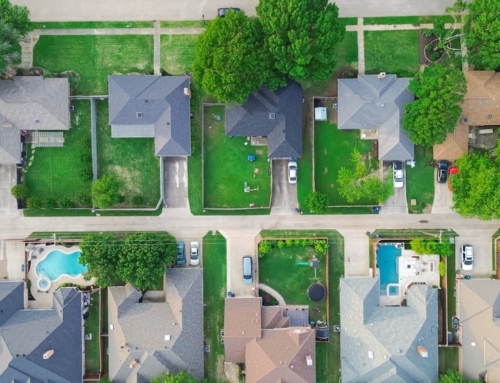If you’re planning to buy a home in 2022, you’ll be facing a tough go. There are too few homes and too many buyers. If you want to be a buyer this year, here are some Home Buyer Resolutions you can make that will help. For more tips, sign up for Ilyce Glink’s free Love, Money + Real Estate newsletter.
Covid, as we pointed out in our 2022 Real Estate Trends story, is a trend accelerator. When it comes to buying a home, Covid has been the best of times (lowest mortgage rates in history during 2020 and part of 2021) and worst of times (home prices are skyrocketing).
As we end 2021, the U.S. is short between 5.5 million and 6.8 million housing units, according to the National Association of Realtors. That includes single-family detached homes, townhomes, condos, and rentals, of all stripes and price points. With the Federal Reserve’s recent announcement that it will raise the federal funds rate three times in 2022, that means mortgage interest rates are likely to rise above the current historic lows.
What does it mean for you? There will continue to be a shortage of homes to buy and they’re going to be even less affordable than they are now. What can you do if buying a home is on your bucket list? Consider making these New Year’s resolutions:
Home buyer resolution #1: Know what you can afford
The problem with viewing beautiful homes for sale online or on television, is that it shapes what you want in a home. You can imagine yourself sitting on a beautiful white couch in front of a roaring fireplace, your marble-topped kitchen island in the background.
Nothing wrong with that vision, other than you may not be able to afford it. And, with interest rates likely rising in 2022, it’s more important than ever to know exactly what you can afford to spend on your dream home.
Start with the four key components of affordability:
- How much you have saved for a down payment. You’ll add this number to the amount your lender allows you to borrow.
- How much your household earns. Your income is tied to how much a lender believes you can pay back each month.
- What debt you carry. How much you pay each month will be subtracted from the total amount you can spend on your mortgage, taxes and homeowners insurance.
- Credit score. Your credit score (and your partner’s) will directly affect the interest rate on the loan.
Once you have a handle on these four components, it’s time to get preapproved for your loan.
Home buyer resolution #2: Get preapproved for your mortgage
When you get preapproved, your lender agrees in writing to fund your loan. Of course, the home must appraise out in value. Getting preapproved allows you to know precisely how much mortgage you can carry because the lender takes into account your debt payments, income and credit score. Once you have this number, add the amount you have available for a down payment to come up with the approximate purchase price. (Don’t forget to set aside the few months of cash reserves the lender will require.)
One thing to remember is that a preapproval letter is not the same thing as getting prequalified for your loan. A true preapproval letter from a lender means a lender has reviewed your credit, undertaken a review of your file and decided they will fund your loan. A prequalification letter is when a lender lets you know that, based on the unverified information you provide, the lender believes you are qualified for a certain loan amount. Some lenders will give you a preapproval letter but include so many qualifications, it really doesn’t amount to a true preapproval.
Home buyer resolution #3: Decide what tradeoffs you’re willing to make
But of course, you won’t be able to afford everything on your wish list. So, make two lists: everything you want in a home and everything you can’t live without. In her book, 100 Questions Every First-Time Home Buyer Should Ask, Ilyce calls this the “Reality Check.”
Building these two lists will help you understand what tradeoffs you’re willing to make. Think through these lists carefully, because each choice and the prioritization you afford it, has real-world consequences. In the book, Ilyce recounts how we traded off a parking space for a wood-burning fireplace – and what a mistake that was when we got our first car.
Home buyer resolution #4: Explore other ways to buy your first piece of real estate
If you want to be a home buyer, but can’t afford to buy a single-family house in your neighborhood of choice, get creative:
- Consider buying a two or three-family unit property, where you live in one unit and rent out the others
- Buy with a partner or friend (be sure to sign a partnership agreement if you’re unmarried)
- Build a multi-generation household to leverage additional income (another growing trend)
- Buy an investment property while you rent to others (perhaps you can move into it later)
- Or, buy a home in a vacation area you frequent. With the way Covid is going, remote work is growing in popularity
Home buyer resolution #5: Get smart about the process
Put together your home buying team. This should include:
- An experienced traditional real estate agent or exclusive buyer agent
- Professional home inspector
- Mortgage lender
- Real estate attorney (if you live in a state that uses attorneys to close residential deals)
- If you’re buying investment property, you should include a tax expert and real estate attorney who does commercial deals
All of these professionals should willingly and kindly share their knowledge and expertise. If not, find someone else.
Educate yourself
Given that almost all residential real estate markets will stay tilted toward sellers for the foreseeable future, you’ll need to be as smart as you can in order to find a home you can love.
To that end, be sure to educate yourself: read, ask questions, and challenge your own assumptions. And remember, the homes you tour won’t look as good as the ones you see on TV, so don’t be discouraged.
Once you close on a home, you can spend the rest of your life redecorating it to your heart’s content.
Ilyce Glink is the publisher of ThinkGlink.com and the CEO of Best Money Moves. She also writes the Love, Money + Real Estate newsletter.
Read More New Year 2022 Trends:
Real Estate Trends for 2022, Part 1
More Real Estate Trends for 2022, Part 2
And Still More Real Estate Trends for 2022, Part 3







Leave A Comment